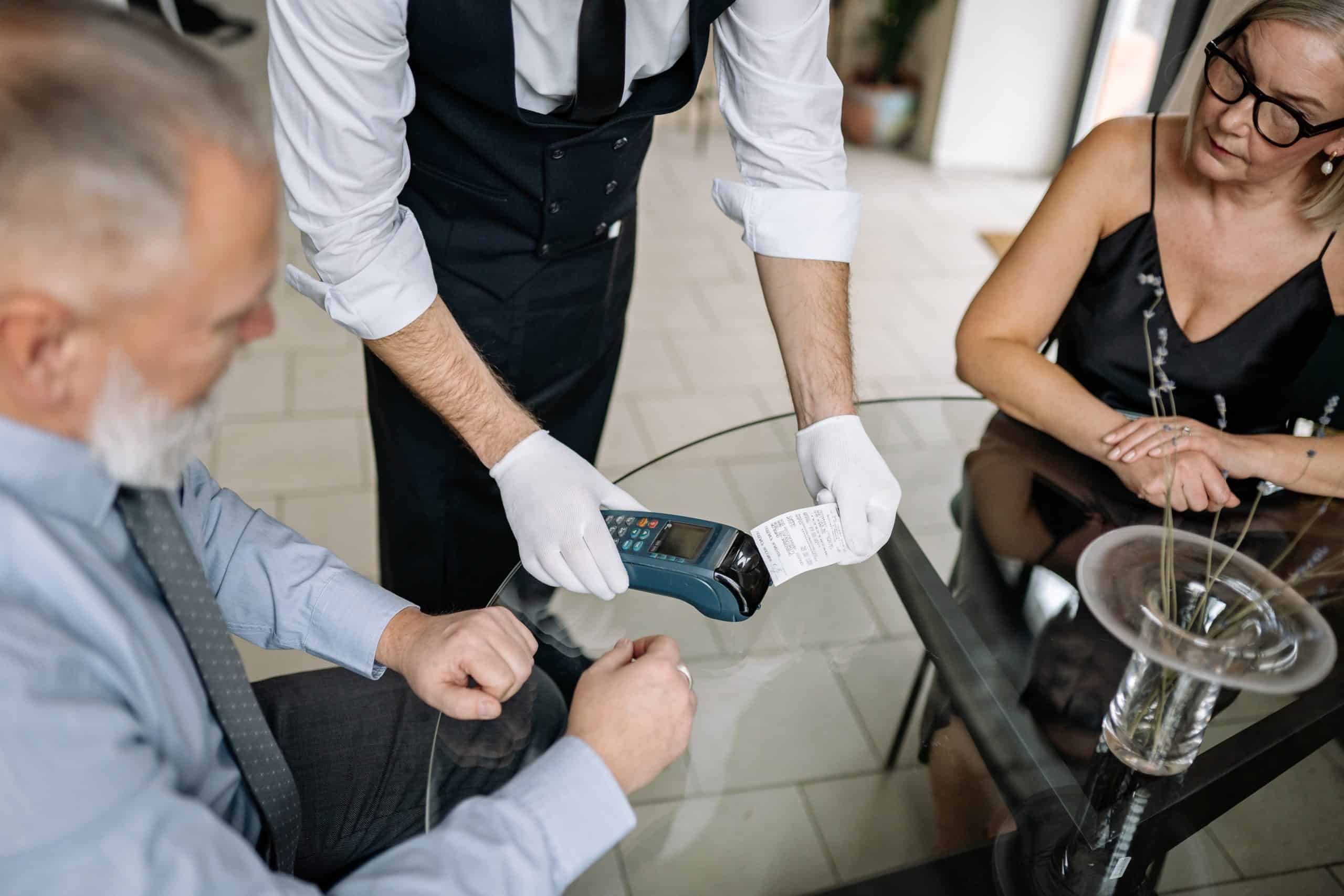According to a Fiserv consumer trends study last year, 75% of customers expect to be able to pay with their credit or debit card at a restaurant. That means having a restaurant Point-of-Sale (POS) system is non-negotiable at this point. But when net profit margins for restaurants average just 5% nationwide, owners need to consider every added expense carefully. That’s why choosing the right restaurant payment system is so important.
The 6 Essential Features of a Great Restaurant Payment System
Restaurants have their own unique needs that other kinds of businesses don’t have. This makes choosing the right restaurant POS all the more important because picking one that’s built for retail or other industries won’t offer all the custom features you might need. Here are six of the most important things a great restaurant payment system should have.
Chip Reader
The EMV chips built into many modern cards provide an added level of security that older magnetic strip readers don’t. Not only can this improved fraud protection help reduce the number of chargebacks you face, it also helps customers feel more secure when paying their bill. So it’s important to have this option available in your restaurant POS.
Contactless Pay
In addition to a magnetic strip and chip reader, it’s good to have a POS that supports tap to pay and other contactless payment methods. Since the pandemic, contactless payment methods have dramatically risen in popularity. The quicker and easier payment method was reported to improve customer satisfaction for 85% of merchants in a global survey by Discover.
Data Access from Anywhere
Your POS is not just a system for processing transactions. It’s also where you store data about menu items, pricing, scheduling, and other key data about your restaurant. To make running your business easier, choose a restaurant payment system that offers cloud-based reporting and multi-location management so that you can adjust your menu, set staff schedules, manage reordering, and all those other daily responsibilities. That way, you don’t have to go into the restaurant every time you need to make a tweak to the menu or change the schedule to accommodate a time-off request.
Inventory Management Tools
As with real-time reporting to help you make data-driven decisions about your business, the transaction data gathered by a POS can also be leveraged for easier inventory management. National Processing’s POS, for example, includes stock alerts to let you know when you’re nearly sold out of an item. It helps you easily manage stock levels, suppliers, and reordering so that you can maintain and adjust your inventory to best match demand.
Convenient Customer Experience Features
While not a necessity, it’s nice to be able to offer flexibility and convenience to your customers as much as possible—and the right restaurant POS can help. For example, some restaurant payment systems include the ability to split tickets by items or by people so that groups can easily split their bill without having to break out a calculator. Some also offer table-side payment options either via a tablet or machine carried by the server or with a dedicated kiosk at the table.
Transparent Fees
You will pay fees on each transaction made using a card, but every payment processor sets their own rate and they aren’t always transparent about how those rates are set or what you can expect to pay. Here’s a quick breakdown of the kinds of fees you can expect to pay:
A Monthly Flat Fee for Your Account
This usually covers customer support and other services associated with managing your merchant account. The support included usually covers merchant account maintenance, payment gateway setup, batch fees, statements, and so on.
Processing Fees
This is where the bulk of the cost of a restaurant payment system comes from. Different credit card providers like Visa and MasterCard each set their own interchange rates. These are adjusted twice a year, in April or October. This rate is paid on every transaction conducted with one of their cards.
Payment processors then turn around and charge merchants like you a fee that builds that interchange rate in and adds a little extra on top for their service. The catch is that some hide how much extra they’re charging or charge the same flat fee across all card transactions even though some have lower interchange rates than others.
To avoid paying more than you should for transactions, it’s best to choose a payment processor that uses an interchange-plus pricing model like National Processing. In this model, the margin on top of that base interchange rate is a fixed flat fee.
This can not only result in paying less since you pay less for cards with lower interchange rates, it also allows you to anticipate exactly how much each transaction will cost. When the interchange rates change in April and October, you’ll also be able to accurately calculate the new costs.
In an industry with razor-thin margins, that kind of predictability and consistency can save you a lot of stress and, in some cases, a lot of money!
Situational Fees
In addition to your monthly payment and processing fees, you might also encounter fees that only happen in certain situations. The three most common ones include:
-
- Chargeback fee. This is a fee charged when a customer disputes a transaction resulting in it being reversed. It can happen if you accidentally double bill them or if the customer was the victim of credit card theft and their card was used at your restaurant. It can also happen if an item is missing from the customer’s order. You can prevent that last one from happening by providing a clear process for tracking orders and requesting refunds for missing items.
-
- PCI non-compliance fees. In addition to interchange rates, credit card issuers also set minimum security standards for preventing fraud. If your restaurant’s security measures don’t meet those standards, your merchant account provider could be hit with a fine ranging from $5,000 to $100,000 which they will pass on to you. To avoid that, take extra care to ensure your business is fully PCI compliant.
-
- Nonsufficient funds (NSF) fee. If you don’t leave enough funds in your merchant account to cover the fees you owe, you might get hit with an NSF fee.
Learn more about what National Processing’s restaurant POS has to offer here!





